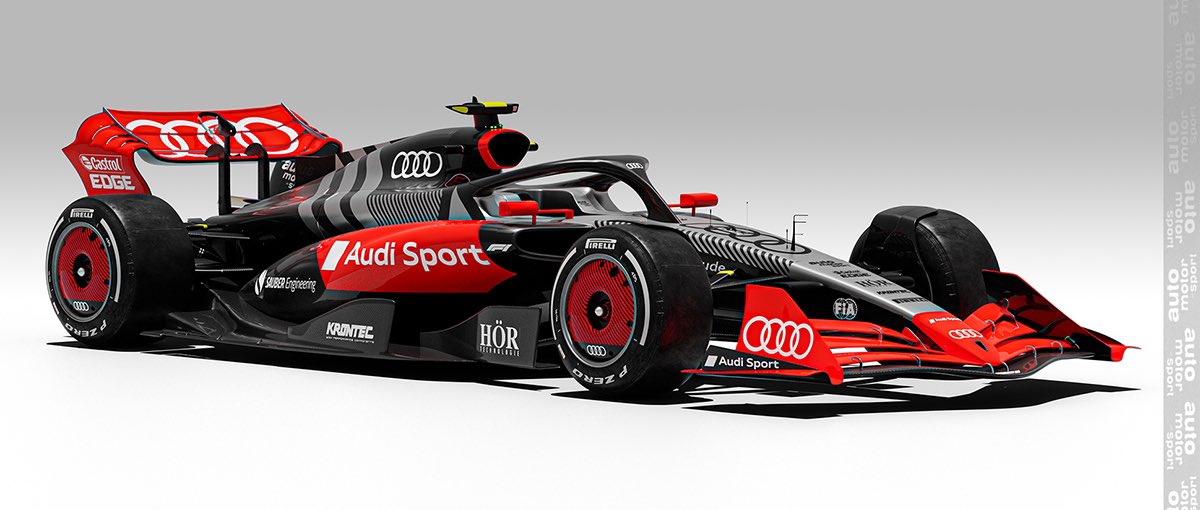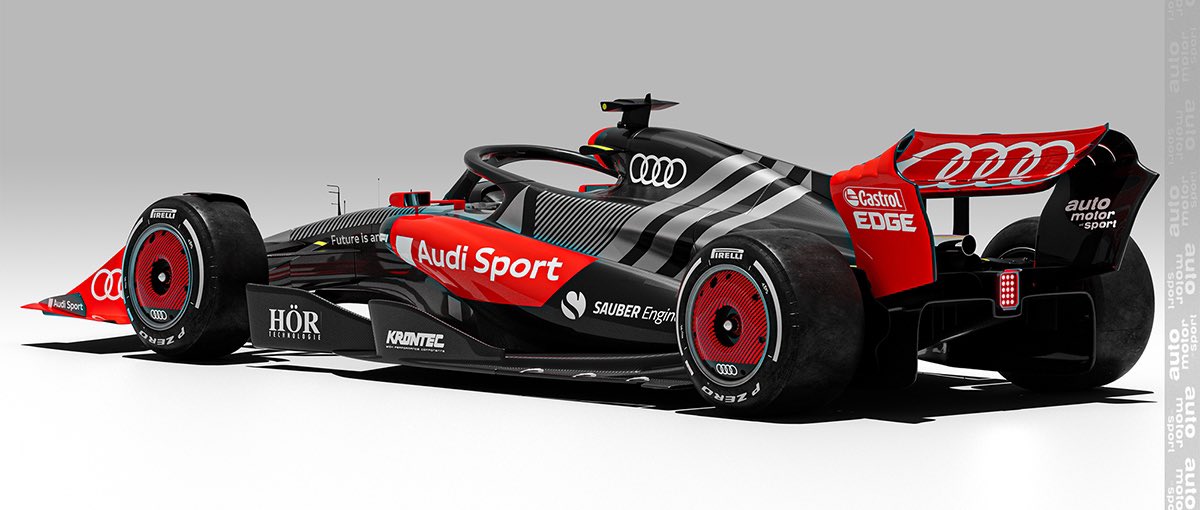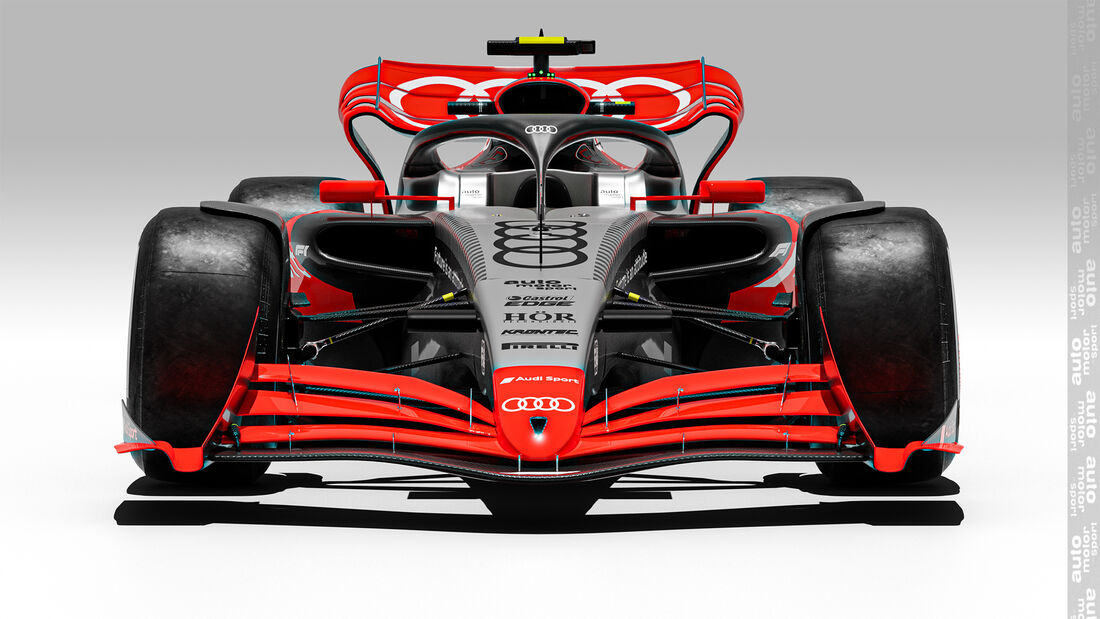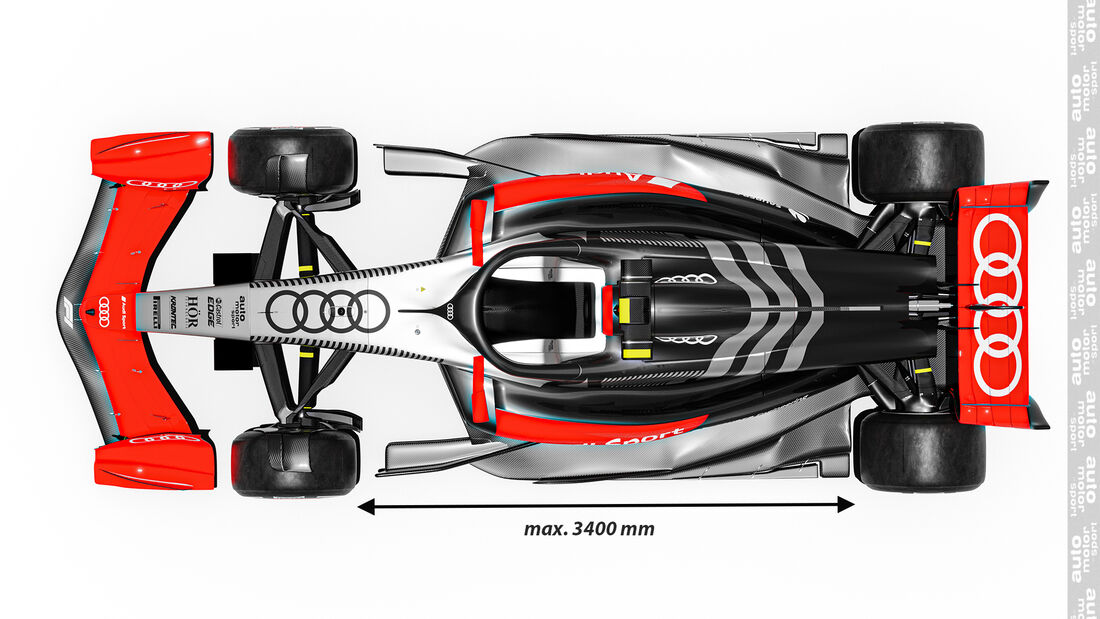I think long cars have far worse effects than a bit of extra weight. Not that I think F1 should be so heavy.
- Login or Register
No account yet? Sign up
Going from 13->18 cost about 15kg so I'm not sure how going 18->16 would save 16kg, but maybe they found areas with the wheels that weight can be dropped. Reduced downforce and weight may mean wheel construction can be lighter


The Formula 1 car for 2026 is taking more and more concrete forms. We asked around the paddock and gathered information about the planned changes. From this we had a 3D model created that corresponds to the current status of the plans and shows many of the new features. In the gallery you will get a first impression of what the future of the premier class will look like.




Overall these seem like sensible solutions, although I have some doubts about a few things. It seems DRS mechanism in the rear will be the same in principal and will also be used to reduce flap(s) angle for low-drag mode. This is sensible and expected, but I'm not sure why they'd want to introduce more flaps since you can do this even with the one flap we have today. I guess the same idea goes for front wing design.- The rim size shrinks from 18 to 16 inches, which reduces the diameter and width of the tires by ten percent.
- The rear wing gets four elements instead of two, a main blade and three flaps. There are also considerations to make the beam wing or the diffuser edge movable.
- There is currently talk of 25 to even 30 kilograms. (weight reduction)
- A return to gas springs has been discussed, but the FIA is not really enthusiastic about this simpler method. There is concern that teams will discover this as a new battlefield.
- In order to compensate for the loss of downforce due to a less pronounced rise in the rear diffuser, the Venturi channels at the front entrance can be set higher. Two additional fins can also be attached under the car on the left and right before the diffuser rises to direct the flow more inwards.
If they get rid of those footplates and make the floor narrower (my preference would be the old 1,400mm wide bodywork form many moons ago) and then it is starting to look like something.Vanja #66 wrote: ↑15 Nov 2023, 09:43Thanks for sharing! There are some interesting insights:
Overall these seem like sensible solutions, although I have some doubts about a few things. It seems DRS mechanism in the rear will be the same in principal and will also be used to reduce flap(s) angle for low-drag mode. This is sensible and expected, but I'm not sure why they'd want to introduce more flaps since you can do this even with the one flap we have today. I guess the same idea goes for front wing design.- The rim size shrinks from 18 to 16 inches, which reduces the diameter and width of the tires by ten percent.
- The rear wing gets four elements instead of two, a main blade and three flaps. There are also considerations to make the beam wing or the diffuser edge movable.
- There is currently talk of 25 to even 30 kilograms. (weight reduction)
- A return to gas springs has been discussed, but the FIA is not really enthusiastic about this simpler method. There is concern that teams will discover this as a new battlefield.
- In order to compensate for the loss of downforce due to a less pronounced rise in the rear diffuser, the Venturi channels at the front entrance can be set higher. Two additional fins can also be attached under the car on the left and right before the diffuser rises to direct the flow more inwards.
Inwash front wing is much needed, for a long time. I doubt the footplates will really be as big as shown on these illustrations, it's just another part of the car that can get damaged and leave debris on track... Inwash sidepod deflectors make sense somewhat, though they might not be as big as depicted.
Floor entry changes explained here don't really make sense, unless the AMuS didn't fully understand what they were actually told. For any given outlet size, you are also limited on the inlet size. Perhaps these two extra strakes will make it even smaller than today (the actual inner-most inlet, between the keel and inner-most strake).
It could be an attempt at drag and weight reduction.
Agreed.
Indeed, but more drag than weight. Drag is very scary for batteries
So pretty much nothing will change meaningfully. Cars 20 cm shorter, insignificant. But 10cm narrower as well, so they will still look and behave like buses. They'll shed a tiny amount of weight, and mess a bit with the aero, so they say they did something.organic wrote: ↑15 Nov 2023, 07:09https://twitter.com/tgruener/status/172 ... 14209?s=20The Formula 1 car for 2026 is taking more and more concrete forms. We asked around the paddock and gathered information about the planned changes. From this we had a 3D model created that corresponds to the current status of the plans and shows many of the new features. In the gallery you will get a first impression of what the future of the premier class will look like.AMuS can reveal first renderings of the next-gen F1 car planned for 2026.
- wheel base -20cm
- width -10cm
- 16 inch wheels
- inwash aero concept (FW & floor)
- new RW design
- wider flow deflectors
- active aero (FW & RW)
https://pbs.twimg.com/media/F-80866XIAA ... &name=orig
https://pbs.twimg.com/media/F-8086zW4AA ... &name=orig
https://imgr1.auto-motor-und-sport.de/F ... 053591.jpg
https://imgr1.auto-motor-und-sport.de/F ... 053596.jpg